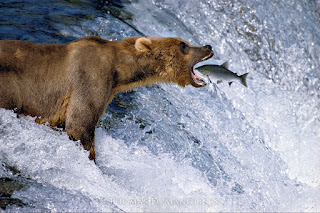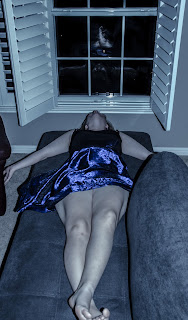Thomas Mangelsen
Mangelsen has traveled through the world, taking photos of the greatest places on earth. Mangelsen's early life was influenced by his father as he grew up in Nebraska. He, Mangelsen, would spend time outside in the wildlife and nature around him. His dad would take him and his brothers to the Platte River to watch different birds migrate through. When Mangelsen was old enough to go to college, he went to the University Nebraska in 1965 then transferred to Doane College in 1967 in Crete, Nebraska. During his time in Doane College, he received his bachelor's degree in biology, which wasn't his original major to begin with. After studying at Doane, he went to Colorado State University where he then studied zoology biology in 1970. During his time in Colorado State, Mangelsen met CU film producer who hired him to be a cinematographer and a film editor for the company Westward Productions which started his photography career.
Mangelsen was named the Conservation Photographer of the Year in 2011 by Nature's Best Photography, earning him a place in the permanent collection in Smithsonian's National Museum. His photo called Polar Dance was then selected by the International League of Conversation Photographers, becoming one of the "40 Most Important Nature Photographs of All Time". Mangelsen was also chosen to be one of the Heroes of the Animal Planet by Dr. Jane Goodall. Later on in his life, he published three books, Images of Nature: The Photographs of Thomas D. Mangelsen, Polar Dance: Born of the North Wind, and The Nature World. Mangelsen is known for his nature photos, like the Brown bear, Brooks Falls Katmai National Park, Alaska" or known as Brown Bear.
Lighting: The lighting looks to be a bit more harsh because it was taken outdoors, so it's safe to assume that Mangelsen used the sun.
Location: Near a river/at a river, where brown bears live. (most likely Brook Falls Katmai National Park in Alaska)
Camera settings: The shutter speed had to have been pretty high to make it look like the water froze, same with the fish. The f-stop might've been near the medium, or higher so enough light was let in
Body Position: Mangelsen's subject was in a position where he could get a side view shot
Clothing and Props: none, its a bear, did you want him to wear a hat?
Composition: Rule of thirds, leading lines, simplicity
Carl Fischer
Fischer was born in Brooklyn and graduated from The Cooper Union and went to study at the Central Saint Martins College of Art and Design in London. Soon after, he became an advertising agent art director in New York, working alongside Paul Rand and Herb Lubalin. Fischer taught himself photography and opened a studio in New York, which ended up winning the The Mark Twain Journalism Award, the Cleo Award, and others even including some medals. His photos are featured in multiple museums and have many awards.
Fischer's photos mostly include portraits, some of the are explicit and involve a lot of meaning. He uses his knowledge of graphic design in some of his photos too to add specific effects. His photos were also used for the Esquire magazine covers int he 1960's. Fischer's photos for the magazine took some editing and behind-the-scenes magic to make them work. He would spend a fair amount of time prepping the photos, editing some aspects out, and making it blend together for them to work. Fischer is mostly known for his portrait of Muhammad Ali called "The Passion of Muhammad Ali".
Composition: Simplicity, rule of thirds
Karen Kuehn
(I couldn't find too much about her)
Karen Keuhn started photography in 1979, she has taken photos for Saturday Night Live and National Geographic. Her work consists of portraits of people and animals. Some of them are unnatural, as the subject is near objects that don't exist in real life naturally. Her portraits can be funny, meaningful, and sometimes abstract. Her ideas are out of the box and interesting. Kahn's subjects consists of celebrities too, having them do something dramatic-which is mostly her style. Kuehn also travels the world, showing her experience through her photos.
One of the photo's she's known for is "Cat's Story".
Mangelsen has traveled through the world, taking photos of the greatest places on earth. Mangelsen's early life was influenced by his father as he grew up in Nebraska. He, Mangelsen, would spend time outside in the wildlife and nature around him. His dad would take him and his brothers to the Platte River to watch different birds migrate through. When Mangelsen was old enough to go to college, he went to the University Nebraska in 1965 then transferred to Doane College in 1967 in Crete, Nebraska. During his time in Doane College, he received his bachelor's degree in biology, which wasn't his original major to begin with. After studying at Doane, he went to Colorado State University where he then studied zoology biology in 1970. During his time in Colorado State, Mangelsen met CU film producer who hired him to be a cinematographer and a film editor for the company Westward Productions which started his photography career.
Mangelsen was named the Conservation Photographer of the Year in 2011 by Nature's Best Photography, earning him a place in the permanent collection in Smithsonian's National Museum. His photo called Polar Dance was then selected by the International League of Conversation Photographers, becoming one of the "40 Most Important Nature Photographs of All Time". Mangelsen was also chosen to be one of the Heroes of the Animal Planet by Dr. Jane Goodall. Later on in his life, he published three books, Images of Nature: The Photographs of Thomas D. Mangelsen, Polar Dance: Born of the North Wind, and The Nature World. Mangelsen is known for his nature photos, like the Brown bear, Brooks Falls Katmai National Park, Alaska" or known as Brown Bear.
Lighting: The lighting looks to be a bit more harsh because it was taken outdoors, so it's safe to assume that Mangelsen used the sun.
Location: Near a river/at a river, where brown bears live. (most likely Brook Falls Katmai National Park in Alaska)
Camera settings: The shutter speed had to have been pretty high to make it look like the water froze, same with the fish. The f-stop might've been near the medium, or higher so enough light was let in
Body Position: Mangelsen's subject was in a position where he could get a side view shot
Clothing and Props: none, its a bear, did you want him to wear a hat?
Composition: Rule of thirds, leading lines, simplicity
Carl Fischer
Fischer was born in Brooklyn and graduated from The Cooper Union and went to study at the Central Saint Martins College of Art and Design in London. Soon after, he became an advertising agent art director in New York, working alongside Paul Rand and Herb Lubalin. Fischer taught himself photography and opened a studio in New York, which ended up winning the The Mark Twain Journalism Award, the Cleo Award, and others even including some medals. His photos are featured in multiple museums and have many awards.
Fischer's photos mostly include portraits, some of the are explicit and involve a lot of meaning. He uses his knowledge of graphic design in some of his photos too to add specific effects. His photos were also used for the Esquire magazine covers int he 1960's. Fischer's photos for the magazine took some editing and behind-the-scenes magic to make them work. He would spend a fair amount of time prepping the photos, editing some aspects out, and making it blend together for them to work. Fischer is mostly known for his portrait of Muhammad Ali called "The Passion of Muhammad Ali".
Lighting: The light bounces off the subject's body around his torso and legs in certain places near the center, so the light probably was directly in front of him, maybe slightly at an angle.
Location: A studio
Camera Settings: A lower, but not exactly too low, shutter speed might've been used so the glisten of the light could still show but not be too overpowering, the ISO used was probably low so the white background wasn't too overpowering either and so the photo didn't have little to no noise in it
Body Position: The subject is standing up with his head tilted to the side and back at an angle where it looks like he's laying down and is dead
Clothing and Props: The subject is wearing athletic shorts that is mostly white with black stripes, laced up high tops/boots that is white, white socks, and there are arrows plus make up on his torso and one on his thigh, the make up was used to look like blood and get the arrows to stick on his body without doing damage to him.
Composition: Simplicity, rule of thirds
Karen Kuehn
(I couldn't find too much about her)
Karen Keuhn started photography in 1979, she has taken photos for Saturday Night Live and National Geographic. Her work consists of portraits of people and animals. Some of them are unnatural, as the subject is near objects that don't exist in real life naturally. Her portraits can be funny, meaningful, and sometimes abstract. Her ideas are out of the box and interesting. Kahn's subjects consists of celebrities too, having them do something dramatic-which is mostly her style. Kuehn also travels the world, showing her experience through her photos.
One of the photo's she's known for is "Cat's Story".
Lighting: The light seems to be in front of the two subjects and more towards the legs to give some shadows and some light outline
Location: A studio
Camera Settings: The shutter speeds seems to be a bit higher so the light isn't overbearing and so the shadows aren't too washed out. The floor is either really polished paper or glass so the legs and part of the cat's body is reflecting back at them.
Body Position: The person has their legs crossed and is doing a ballet stance where they're on the tips of their toes, the cat is at the side of the person looking up at them and leaning back slightly.
Clothing and Props: The person is wearing tights to give their legs a bit more of a peachy skin tone and ballet shoes, the legs can be counted as a prop, assuming the photo is more about the cat considering the name does say "Cat" in it
Composition: Simplicity, leading lines





Comments
Post a Comment